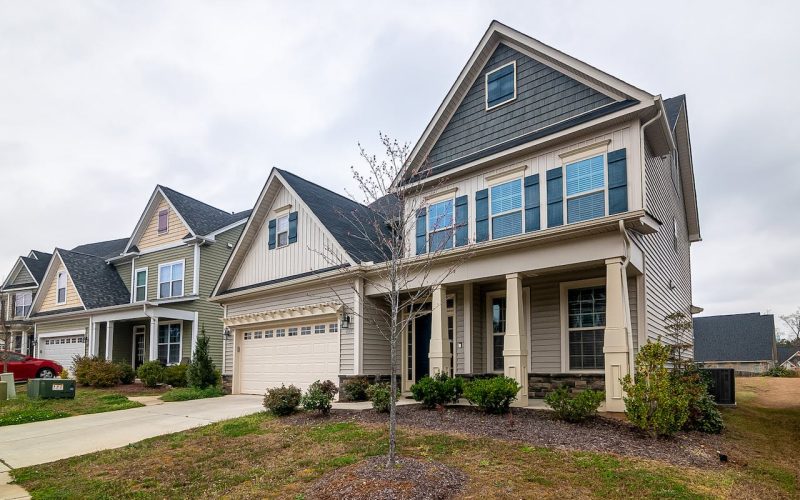Curb to Closing: Preparing Your Home for Sale
Selling your home is a significant endeavor, and the journey from listing to closing involves many important steps. This comprehensive guide provides you with a detailed plan to prepare your home for sale, covering everything from enhancing curb appeal to finalizing the deal.
Setting the Stage: Home Staging Essentials
Your home’s interior plays a crucial role in making a positive impression on potential buyers. Follow these home staging essentials:
1. Declutter and Depersonalize
The first step is to remove personal items and clutter. This creates a neutral canvas that allows potential buyers to envision themselves in the space.
Advantages:
- Enhances buyer appeal.
- Creates a blank canvas for personalization.
2. Clean and Repair
Ensure your home is spotless and in good repair. A well-maintained, clean property is inherently more attractive to buyers.
Advantages:
- Positively impacts first impressions.
- Demonstrates the property’s value.
3. Furniture Arrangement
Rearrange furniture to create an open and spacious feel. Aim for a balanced and harmonious layout to showcase each room’s potential.
Advantages:
- Highlights the available space.
- Helps buyers envision living in the home.
4. Lighting
Proper lighting can transform the ambiance of a room. Use lighting to highlight the best features of each space, and maximize natural light if possible.
Advantages:
- Creates a warm and inviting atmosphere.
- Showcases the property’s features.
5. Neutral Colors
Repaint bold or outdated colors with neutral tones. This allows potential buyers to visualize their own style and décor in the space.
Advantages:
- Appeals to a broader range of buyers.
- Creates a blank canvas for personalization.
Table 1: Home Staging Essentials
| Aspect | Description | Advantages |
|---|---|---|
| Declutter and Depersonalize | Remove personal items and clutter. | Enhances buyer appeal, creates a blank canvas for personalization. |
| Clean and Repair | Ensure your home is spotless and well-maintained. | Positively impacts first impressions, demonstrates the property’s value. |
| Furniture Arrangement | Create an open, spacious, and balanced layout. | Highlights the available space, helps buyers envision living in the home. |
| Lighting | Use appropriate lighting to highlight key features. | Creates a warm and inviting atmosphere, showcases the property’s features. |
| Neutral Colors | Repaint with neutral tones for a blank canvas. | Appeals to a broader range of buyers, creates a blank canvas for personalization. |

Elevating Curb Appeal
Your home’s exterior is the first thing potential buyers see. Make a great first impression with these curb appeal essentials:
1. Landscaping
Maintain the lawn, add fresh mulch, and plant colorful flowers. Well-kept landscaping creates an inviting atmosphere.
Advantages:
- Draws potential buyers in.
- Increases the perceived value of the property.
2. Front Door
Consider a fresh coat of paint or a new door to make a significant impact. The front door is a focal point that sets the tone for the entire property.
Advantages:
- Enhances the property’s first impression.
- Adds visual appeal.
3. Outdoor Lighting
Illuminate pathways and the entry for evening viewings. Outdoor lighting not only enhances safety but also adds a warm and welcoming ambiance.
Advantages:
- Creates a welcoming atmosphere.
- Increases security and visibility.
4. Clean Exteriors
Power wash siding, clean windows, and make sure the roof is in good condition. A well-maintained exterior indicates a well-cared-for home.
Advantages:
- Makes your property look well-maintained.
- Demonstrates the property’s value.
5. Driveway Repair
If your driveway has cracks or damage, consider repairing it. A smooth and well-kept driveway enhances the overall appearance of your property.
Advantages:
- Enhances overall curb appeal.
- Adds to the property’s visual appeal.
Table 2: Curb Appeal Essentials
| Aspect | Description | Advantages |
|---|---|---|
| Landscaping | Maintain the lawn, add fresh mulch, and plant colorful flowers. | Draws potential buyers in, increases the perceived value of the property. |
| Front Door | Consider a new door or a fresh coat of paint. | Enhances the property’s first impression, adds visual appeal. |
| Outdoor Lighting | Illuminate pathways and the entry for evening viewings. | Creates a welcoming atmosphere, increases security and visibility. |
| Clean Exteriors | Power wash siding, clean windows, and inspect the roof. | Makes your property look well-maintained, demonstrates the property’s value. |
| Driveway Repair | Fix any cracks or damage in the driveway. | Enhances overall curb appeal, adds to the property’s visual appeal. |
Home Staging and Curb Appeal in Action
To achieve the best results, consider these practical tips for combining your home staging and curb appeal efforts:
- Street View Matters: Start by examining your property from the street. Ensure your property looks inviting from the outside and carries that appeal inside. The first impression can influence the entire viewing experience.
- Create a Seamless Transition: Make sure there’s a seamless transition from the curb to the front door. A well-maintained walkway, tasteful landscaping, and an attractive entry set the tone for the rest of the viewing experience.
- Consistency is Key: Maintain consistency in style, color, and cleanliness throughout your property. Cohesion creates a polished and inviting atmosphere.
- Finishing Touches: Don’t forget the finishing touches. Fresh flowers, pleasant scents, and a welcoming atmosphere during showings can leave a lasting impression.
The Road to Closing
With your home beautifully staged and enhanced curb appeal, you’re well on your way to a successful sale. But the journey doesn’t end there. Here are the final steps to closing the deal:
1. Pricing Your Home
Work with a real estate agent to set a competitive price. Consider market conditions, your property’s unique features, and recent sales in your area.
Advantages:
- Attracts serious buyers.
- Maximizes your property’s value.
2. Marketing Your Property
Promote your home through various channels, including online listings, social media, and traditional marketing methods.
Advantages:
- Reaches a broader audience.
- Increases the chances of a quick sale.
3. Showings and Negotiations
Schedule showings, respond to offers, and engage in negotiations. Your real estate agent will guide you through this process.
Advantages:
- Attracts potential buyers.
- Ensures a fair deal.
4. Inspection and Appraisal
Prepare for the buyer’s inspection and the property appraisal. Address any issues that arise during this phase.
Advantages:
- Clears potential roadblocks.
- Ensures a smooth transaction.
5. Closing the Deal
Work with your real estate agent and the buyer’s representative to finalize the sale. Sign the necessary documents, and the keys will be handed over to the new owner.
Advantages:
- Achieves a successful sale.
- Ensures a smooth and legal property transfer.
Conclusion
Selling your home can be a smooth and successful process when you pay attention to both home staging and curb appeal. By creating an inviting interior and an attractive exterior, you make your property irresistible to potential buyers. Follow the road to closing diligently, and you’ll soon be celebrating a successful sale, maximizing your selling success from curb to closing.












